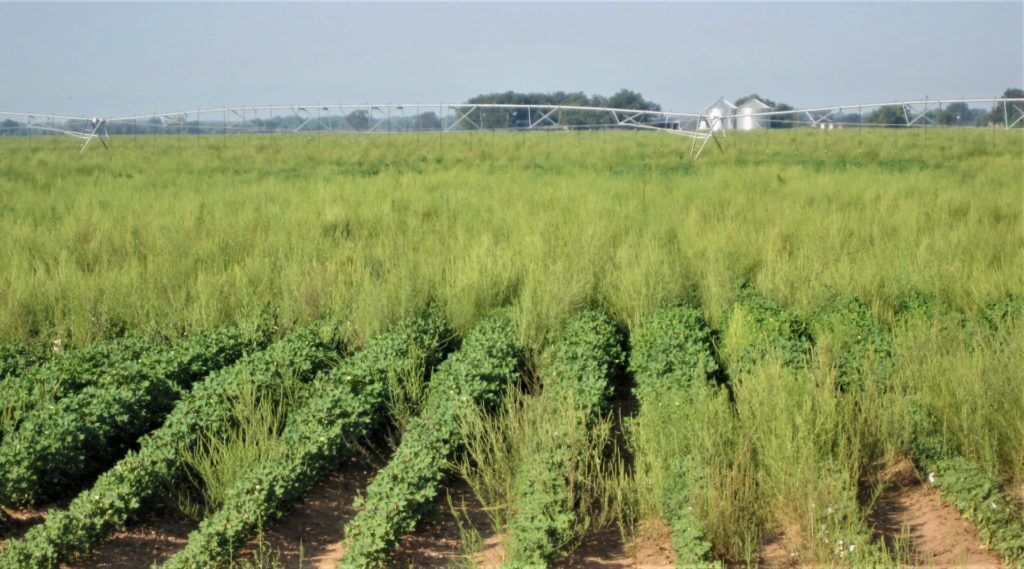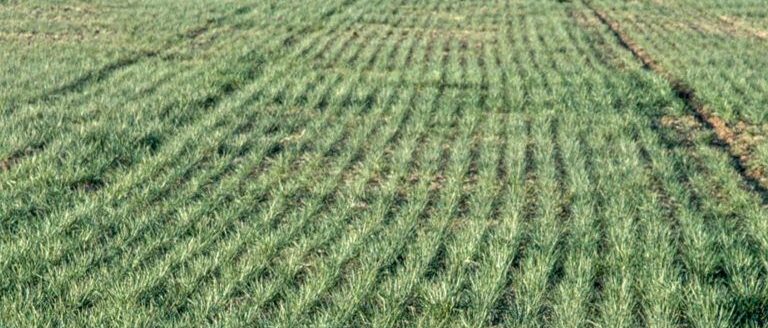Out-of-control weeds are the latest challenge to hit Texas producers among the negative effects related to untimely rains since late spring, according to a Texas A&M AgriLife Extension Service expert.
Rainy weather across the state has created a convergence of problems related to weeds for producers of everything from row crops like corn, sorghum and cotton to forages, said Scott Nolte, Ph.D., AgriLife Extension state weed specialist, Bryan-College Station.
“The weather has impacted most every part of the state,” he said. “Many areas have a number of factors that are coming into play when it comes to weeds and weed control. It’s been a challenging season.”
Weeds outcompeting crops
Plantings were delayed due to widespread rainfall events that began in late-April. Heavy rains saturated soils in many areas around the state initially, and sporadic rains since have continued to make fieldwork, especially weed control, difficult from the Coastal Bend to parts of the Panhandle, Nolte said.
Saturated soil and cloudy days also stunted crop growth progress. This delayed the canopy development that typically reduces the amount of sunlight available for weeds to germinate and grow, Nolte said.
Residual preemergent herbicide application effectiveness degraded over time as well, and weeds were allowed to compete with crops for sun, moisture and nutrients.
Moisture variability in individual fields with drier-to-saturated or flooded areas also resulted in a lack of uniformity in crop maturation, he said.
Nolte said there were some cotton fields with a range of maturity ranging from 6-inch-tall plants to plants with blooms due to the rainfall. The lack of crop consistency exacerbated maturation issues.
There has also been an emergence of weeds that were rarely seen in areas of the state in previous seasons, Nolte said.
“One of the most common calls we’ve been getting is about sedges,” he said. “They thrive in wet environments, and we’re seeing a variety of sedge species in areas we seldomly see them. We’ve had a number of them brought in for identification and control recommendations.”
Looking for relief, rescue from weeds
Producers are also seeking control recommendations for fields in need of rescue from weeds, Nolte said. Weeds are easier to deal with via preemergent applications and by following with sprays that address newly emerged immature weeds.
The lack of timely applications has many producers seeking recommendations to fight mature grasses and vines, he said. Above-average moisture levels may allow producers to use some options like Liberty that are typically ineffective under drier conditions in areas like the Texas Plains or Panhandle.
However, at least one prevalent pest plant—pigweed—has producers concerned because it has become resistant to a standard herbicide—glyphosate—in parts of the state, Nolte said. Pigweed is among pest plants representing major problems at harvest time because weeds interfere with mechanical harvesting equipment.
Nolte said producers aware of history with glyphosate-resistant pigweed have other options, but another issue has been short supplies of certain products. Various international and domestic supply chain issue related to the pandemic and other factors have created situations where locating specific herbicides can be difficult.
Nolte said there is also concern for cotton producers specifically because the U.S. Environmental Protection Agency placed a hard cutoff date, July 30, on the use of dicamba-based products, Engenia and Xtendimax. Cutoff dates were typically related to the plant stage, Nolte said, and AgriLife Extension sought an extension for producers in the Texas Plains, but was denied by the agency.
Producers are also seeking recommendations on how to best apply herbicides, including aerial crop-dusting methods or high-clearance tractors, he said, adding that as rain events continue it is important that producers access fields to apply herbicides before harvest.
“With the cycle of rainfall, you might have two to three days for fields to dry before more rainfall prevents access again,” he said. “So, they’re looking for any way to spray fields so they can harvest as soon as it dries enough.”




